Trekking Routes on Everest Region
Nestled amidst the towering peaks of the Himalayas lies the Everest Region, a premier destination for trekkers and adventurers from around the globe. Known for its rugged trails, dramatic landscapes, and the iconic Mount Everest, this region offers a plethora of trekking routes that cater to a wide spectrum of preferences, from the classic Everest Base Camp Trek to the challenging Everest Three Passes Trek. Luxury Holidays Nepal Pvt. Ltd. invites you to explore the diverse terrain, from the turquoise Gokyo Lakes to the remote valleys adorned with Sherpa culture and tradition. Each path is lined with the promise of breathtaking vistas, unique wildlife, and the warmth of local hospitality, making your journey not just a trek but an experience of a lifetime. Whether you are drawn by the lure of the world's highest peaks or the allure of the vibrant culture in the Khumbu region, the trekking routes in the Everest Region are poised to exceed your expectations and provide memories to cherish forever.
In the Everest Region, we at Luxury Holidays Nepal Pvt. Ltd. are in the forefront of creating unforgettable trekking experiences. Our in-depth knowledge and intense love of the Himalayan magnificence allow us to create custom itineraries that seamlessly combine luxury, adventure, and deep cultural connection. With a history of leading intrepid travelers down these legendary routes, we promise to provide experiences that capture the deep beauty of the highlands. Our knowledgeable and experienced Sherpa guides, who hail from the very heart of the Khumbu region, are not only experts in navigation but also serve as cultural ambassadors, offering insights into the local traditions and stories that enrich your journey. From ensuring acclimatization to safeguarding your health at high altitudes, we are committed to making your trek both enjoyable and safe. We understand that trekking in this majestic part of the world is not just a physical endeavor but also a spiritual journey. Therefore, whether you're gazing at the stars from the Everest Base Camp, marveling at the serene Gokyo Lakes, or traversing the high passes, Luxury Holidays Nepal ensures that your adventure is nothing short of extraordinary. Our attention to detail, commitment to eco-friendly practices, and the luxury of personalized services make us the best company to choose for your Himalayan adventure in the Everest Region.
Diverse Trekking Options
Everest Base Camp Trek
The Everest Base Camp Trek is the most iconic route in the region, taking you to the foot of the tallest mountain in the world. This trek is not only about reaching the base camp but also about enjoying the vibrant Sherpa culture and stunning landscapes. It typically spans 12 to 14 days and includes significant stops like Namche Bazaar, Tengboche Monastery, and Kala Patthar for a panoramic view of Everest.
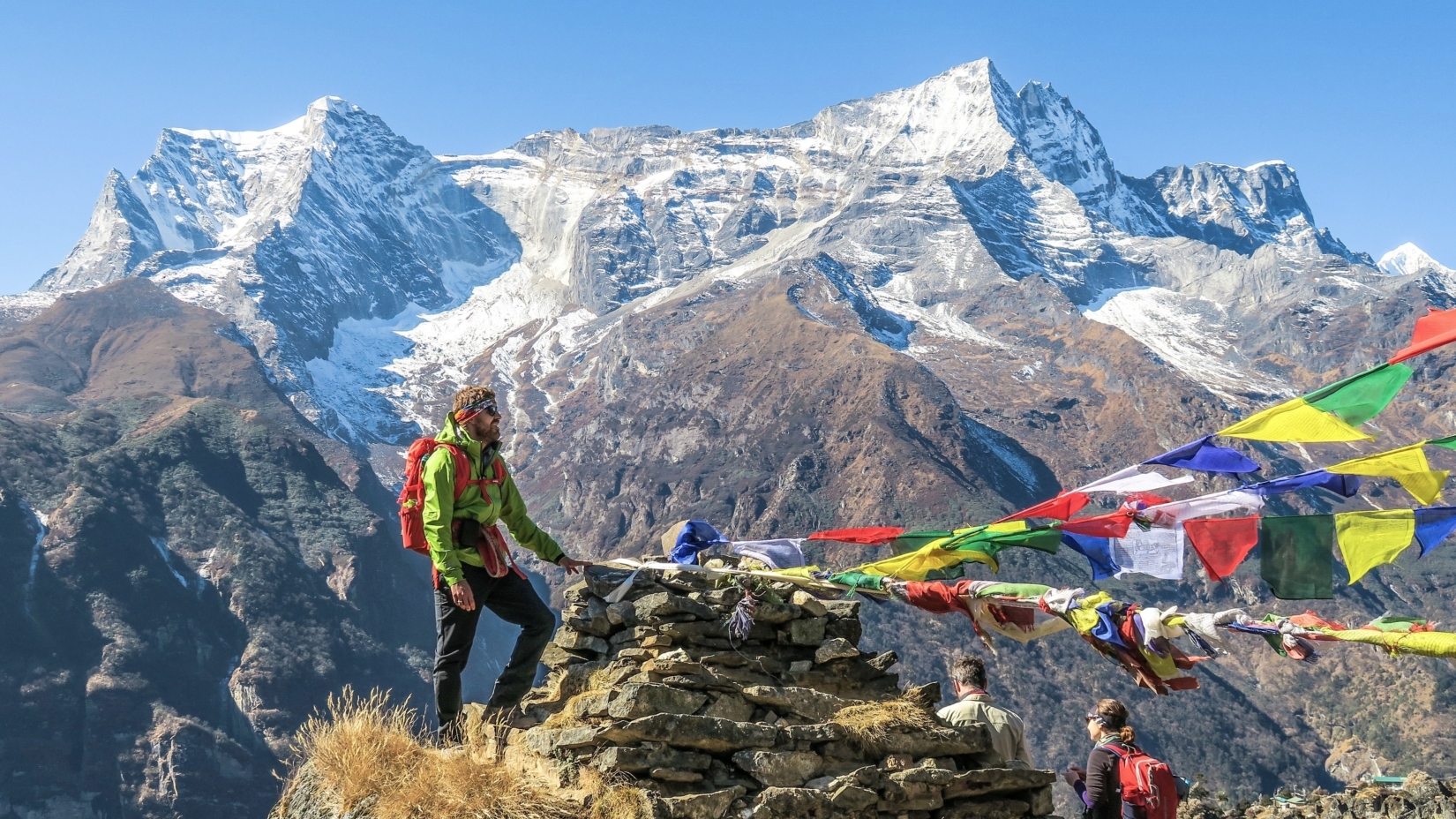
Gokyo Lakes Trek
A wonderful alternative to the traditional Base Camp trek, the Gokyo Lakes Trek takes adventurers to a series of beautiful turquoise lakes. The less crowded trails culminate in a climb to Gokyo Ri, from where one can enjoy spectacular views of Everest and the surrounding mountains.
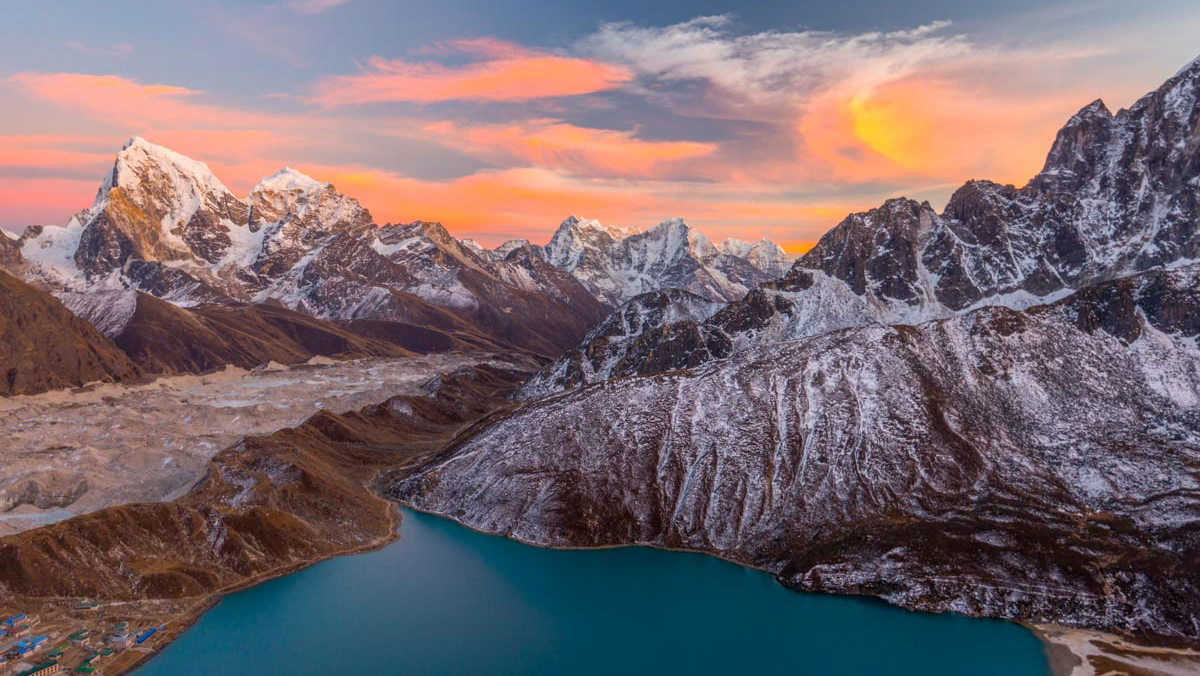
Everest Three Passes Trek
This is a more challenging option for those looking to push their limits. As the name suggests, the trek traverses three high mountain passes – Kongma La, Cho La, and Renjo La – each offering stunning views and a sense of accomplishment.
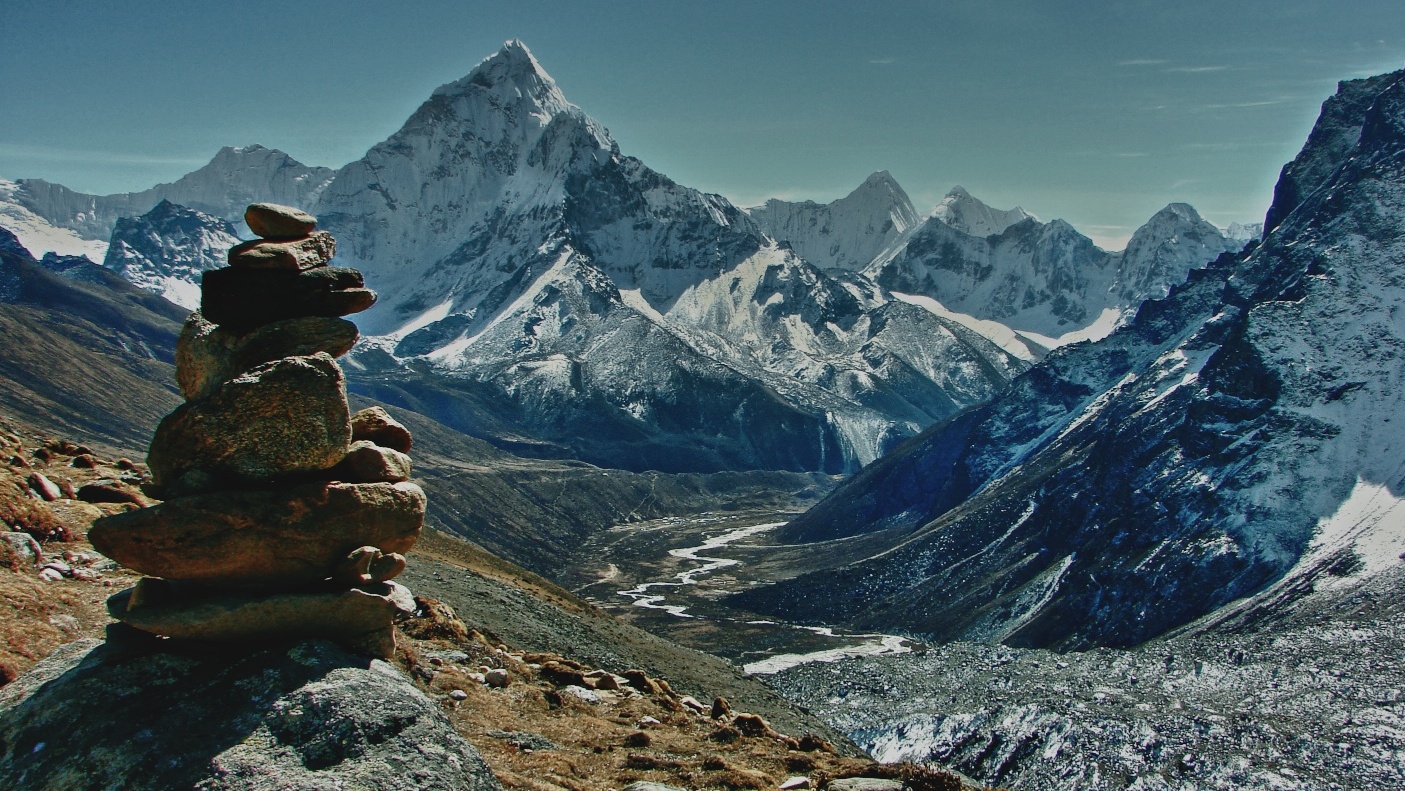
Everest Panorama Trek
Ideal for those short on time but still wishing to experience the magic of Everest, this trek offers magnificent views of Everest and its neighboring peaks in just 7 to 8 days, making it one of the shorter options in the region.
Island Peak Trek with Everest Base Camp
A combination of trekking and introductory mountaineering, this option includes the ascent of Island Peak, providing a challenging but achievable summit for those with little or no mountaineering experience.
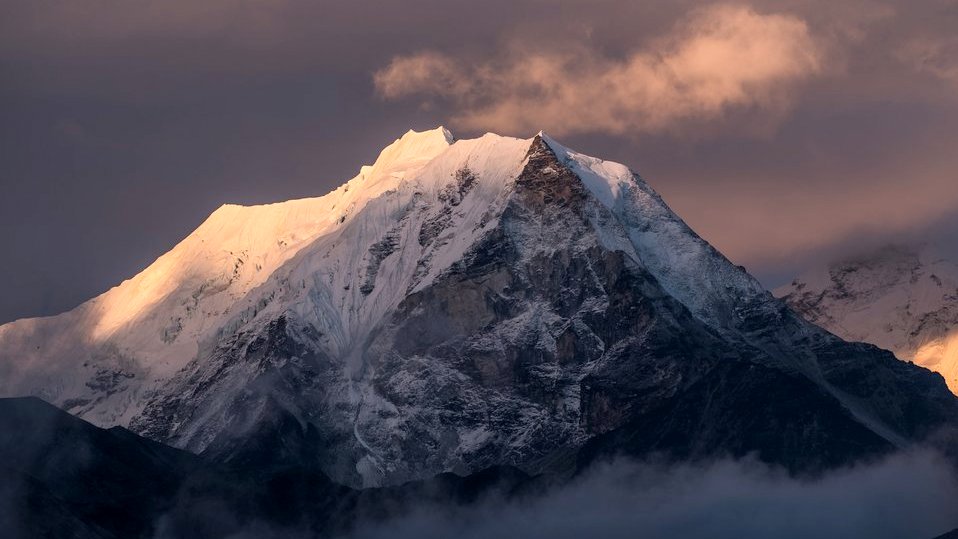
Mera Peak Trek
The Mera Peak Trek is a challenging and rewarding adventure that takes around 16-18 days to complete. It involves trekking through remote areas, offering stunning views of Everest, Lhotse, and Makalu. With some mountaineering experience required, trekkers will undergo basic training before summiting Mera Peak (6,476 meters). The route passes through picturesque Sherpa villages, dense forests, and alpine meadows. After reaching the summit, trekkers descend back to Lukla and return to Kathmandu. It's a thrilling journey that combines breathtaking landscapes with a mountaineering achievement.
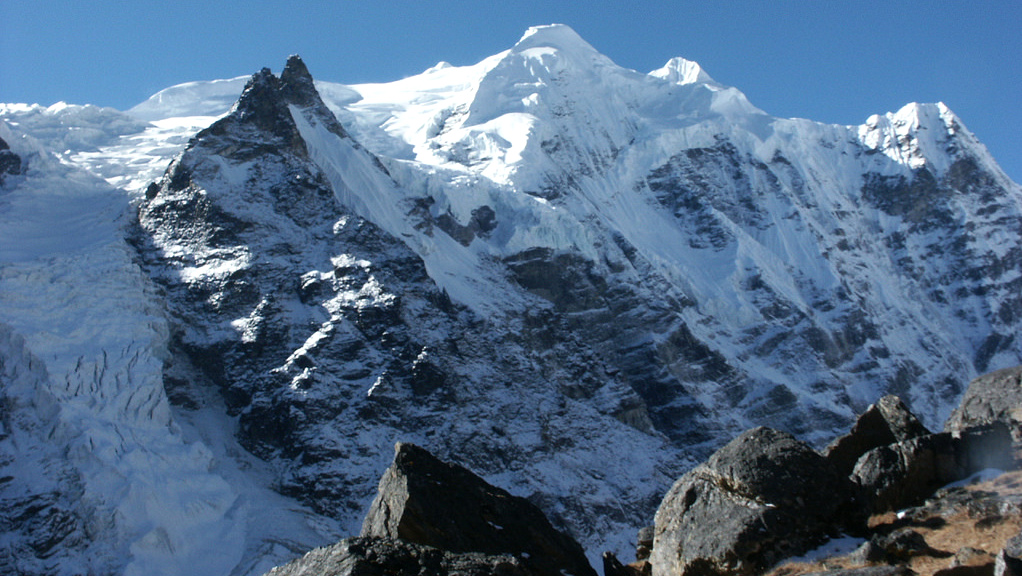
Jiri to Everest Base Camp Trek
For the traditionalist at heart, this trek retraces the steps of the early Everest expeditions before the advent of flights to Lukla. Starting from Jiri, it passes through the heartland of the Sherpa community.
Luxury Everest View Trek
A comfort-oriented trek that brings together the beauty of the Everest Region with the comfort of luxury lodges. This trek is suitable for those who wish to experience the Himalayas without forgoing their comforts.
Everest Base Camp Trek with Helicopter Return
For those pressed for time or who wish to skip the trek back, this option includes a spectacular helicopter flight from Everest Base Camp back to Kathmandu or Lukla.
Luxury Everest Base Camp Trek
The Luxury Everest Base Camp Trek offered by Luxury Holidays Nepal is the epitome of a high-altitude adventure wrapped in exclusivity and comfort. This journey transcends the conventional trekking experience, combining the rugged beauty of the world's most iconic mountain trails with the pleasure of luxury lodgings. As trekkers ascend towards the legendary base of the mighty Everest, they are treated to a fusion of breathtaking landscapes and indulgent amenities. From private helicopters whisking you over awe-inspiring vistas to sumptuous meals prepared by skilled chefs in the shadow of the Himalayas, every detail is meticulously crafted to ensure an unparalleled trekking experience that promises not just a physical journey to the heart of the Khumbu region but a voyage of utmost comfort and personal fulfillment.
Spectacular Mountain Scenery
The Everest Region is not merely a destination but a dramatic canvas of nature, offering trekkers some of the most spectacular mountain scenery on the planet. Each step on these storied paths brings a new panorama of rugged beauty that leaves an indelible mark on the heart and soul of every visitor. Here are the highlights of the breathtaking vistas you can expect:
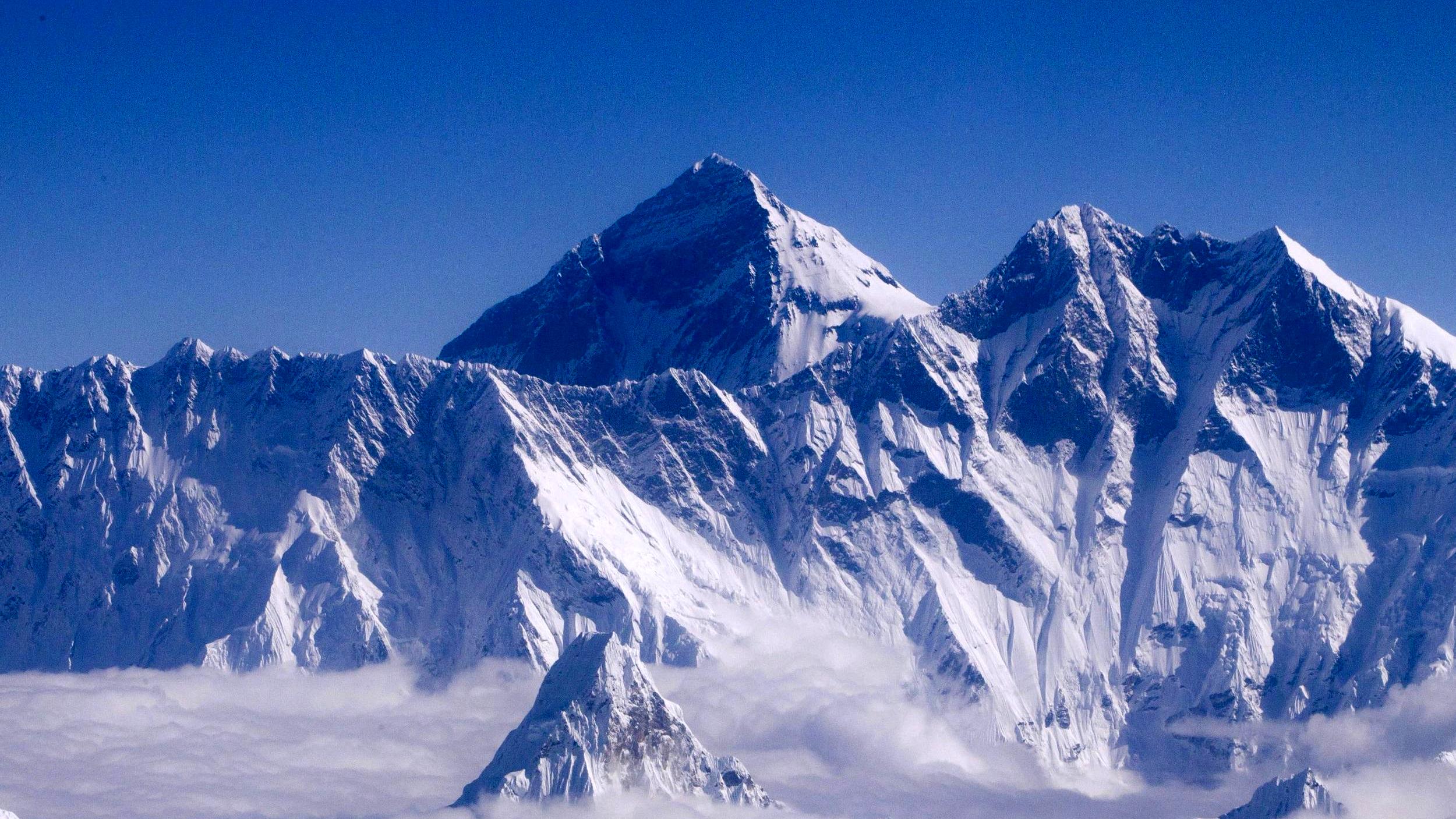
Majestic Peaks
- Mount Everest: The star of the region, standing at an awe-inspiring 8,848 meters, offers an imposing backdrop to the entire trekking journey.
- Lhotse and Nuptse: These are two of Everest's closest companions, forming a formidable mountain massif that dominates the skyline.
- Ama Dablam: Known as one of the most beautiful mountains in the world, Ama Dablam’s distinctive silhouette is a highlight for many trekkers.
- Thamserku and Kangtega: These majestic peaks add to the grandeur of the Khumbu Valley with their towering presence.
Panoramic Views from Summits and Passes
- Kala Patthar: At 5,643 meters, the ascent to Kala Patthar is a highlight for many, offering one of the best viewpoints of Everest.
- Gokyo Ri: The summit offers a stunning 360-degree view of the Gokyo Lakes set against the backdrop of the Himalayan giants.
- Renjo La, Cho La, and Kongma La: These high mountain passes provide challenging treks but reward unparalleled views of glaciers, icefalls, and sweeping landscapes.
Glaciers and Icefalls
- Khumbu Glacier: As the highest glacier on Earth, it’s a monumental river of ice that demands respect and admiration.
- Khumbu Icefall: Located at the head of the Khumbu Glacier, the icefall is one of the most dangerous stages of the South Col route to Everest's summit.
Emerald Lakes and Rivers
- Gokyo Lakes: This chain of six glacial-fed lakes are the world’s highest freshwater lake system, renowned for its bright turquoise waters.
- Imja Tse Lake: Situated near Island Peak, the lake is a relatively new body of water formed by the melting of the Imja Glacier.
Rippling Terrains and Alpine Forests
- The trails wind through lush rhododendron forests, open alpine meadows, and dry, rugged landscapes, each providing a unique ecosystem with its own version of beauty.
Ever-Changing Skies
- The Himalayas are famous for their dramatic cloud play and lighting, where the golden hues of dawn and dusk bathe the mountains in a surreal glow.
Starlit Nights
- Away from the light pollution of cities, the night skies over the Everest Region are a celestial dome of stars, offering a view of the Milky Way in all its glory.
Luxury Holidays Nepal organizes treks with ample opportunities for trekkers to pause, reflect, and immerse themselves in these natural wonders. The emphasis is always on taking the time to truly absorb the grandeur that surrounds you, making your Himalayan adventure not just a physical endeavor but also a feast for the senses. Whether it's your first visit or your tenth, the mountains' call remains just as compelling, promising scenes that are both intimately familiar and thrillingly new with each trek.
Cultural Experiences
Embarking on a trek in the Everest Region is not merely an outdoor adventure; it's a deep dive into a rich cultural tapestry. The Khumbu valley is not just a gateway to towering peaks, but also to the heart of Sherpa culture and tradition.
Sherpa Villages and Lifestyle
- Trekkers pass through authentic Sherpa villages such as Namche Bazaar, Tengboche, and Khumjung, each offering a glimpse into the daily lives of the local people. The Sherpas, with their unique traditions and warm hospitality, have a deep connection with the mountains, regarding them as sacred.
Tengboche Monastery
- A spiritual highlight is the visit to Tengboche Monastery, the largest gompa in the Khumbu region. Here, trekkers can witness monks in prayer, spinning prayer wheels, and intricate wall hangings that depict Buddhist lore, offering a peaceful and reflective experience.
Local Festivals
- If timed right, visitors may experience vibrant local festivals like Mani Rimdu and Dumji, which are celebrated with great enthusiasm. These festivals are a whirl of color and sound, with masked dances, music, and religious ceremonies.
Everest View Hotel
- For a cultural experience with a touch of luxury, the Everest View Hotel offers traditional Sherpa hospitality combined with panoramic views of the mighty peaks, providing insight into the blend of modernity and tradition.
Sagarmatha National Park Museum
- The museum located near Namche Bazaar provides trekkers with educational insights into the history of the Everest climbs, Sherpa culture, and the biodiversity of the region.
Local Cuisine
- The culinary experiences in the Everest Region are not to be missed. From sampling the local Sherpa stew, known as Sherpa, to the Tibetan-inspired momo (dumplings) and the hearty dal bhat, food becomes an integral part of the journey.
Artifacts and Handicrafts
- The Khumbu is dotted with small shops selling local handicrafts, Thangka paintings, prayer flags, and hand-woven garments. These are not only souvenirs but artifacts that carry the essence of the Himalayan spirit.
Language and Music
- Immersing in the local language, even learning just a few basic phrases, can be incredibly rewarding. The sound of traditional music, often heard during evenings in the communal areas of lodges, adds another layer to the cultural tapestry.
Guided Cultural Tours
- Luxury Holidays Nepal offers guided cultural tours within the trekking experience, where knowledgeable local guides share insights about the local folklore, religious practices, and the significance of natural landmarks.
The cultural journey in the Everest Region is as compelling and rewarding as the physical trek. It's an exploration of humanity at high altitudes, where the grandeur of the mountains is matched by the depth of human heritage. Trekkers return home not just with photos of stunning landscapes, but with stories of human connection, resilience, and a newfound appreciation for a way of life that thrives in the shadow of the highest peaks on Earth.
High-Altitude Challenges
Trekking in the Everest Region is a bucket-list experience for many adventurers, but it comes with its own set of challenges, primarily due to the high altitude and rugged terrain. Acknowledging and preparing for these challenges is essential for a successful and enjoyable trek. Here are some of the high-altitude challenges trekkers may face:
Acclimatization
- The most significant challenge is acclimatization to the high altitude. As trekkers ascend, the air becomes thinner, and less oxygen is available. Without proper acclimatization, there is a risk of altitude sickness, which can be life-threatening. It’s vital to follow a gradual ascent and include acclimatization days in the itinerary.
Everest Base Camp Altitude Sickness
- Specifically, on the Everest Base Camp Trek, trekkers reach an altitude of 5,364 meters (17,598 feet). Symptoms of altitude sickness can include headaches, nausea, and dizziness. Luxury Holidays Nepal provides experienced guides who monitor trekkers for signs of altitude sickness and make necessary adjustments to the itinerary.
Cold Weather and Harsh Climate
- The weather at high altitudes can change rapidly, and temperatures can plummet, especially after sunset. It's crucial to have the right trekking gear and to dress in layers to manage the cold.
Rugged Terrain
- The trails in the Everest Region can be steep, rocky, and sometimes icy, requiring a good level of physical fitness and appropriate footwear. The use of trekking poles is highly recommended for additional stability.
Hydration and Nutrition
- At high altitudes, staying hydrated is key to helping your body acclimatize. However, due to the cold weather, trekkers might not feel as thirsty and may neglect hydration. Similarly, maintaining adequate calorie intake is important, even if appetite decreases with altitude.
Everest Three Passes Trek Difficulty
- For those undertaking the Everest Three Passes Trek, the difficulty level is high due to the crossing of three passes over 5,000 meters, each presenting its own challenges, including steep ascents and descents on potentially snow-covered trails.
Health and Fitness
- Prior health conditions can be exacerbated by high altitude. Fitness levels should be appropriately built up before the trek, and trekkers should consult with healthcare providers before embarking on such a high-altitude adventure.
Everest Region Trekking without a Guide
- While it’s possible to trek in the region without a guide, doing so increases the risk significantly. A guide not only helps with navigation but also ensures that trekkers adhere to safe practices regarding altitude and terrain.
Navigation and Route Finding
- Weather conditions can lead to poor visibility, making trails hard to follow. Our experienced guides play a crucial role in ensuring the safety and direction of the trekking party.
Emergency Situations
- In case of medical emergencies, access to immediate care is limited. It's important to have a solid emergency plan, which includes travel insurance that covers evacuation and medical expenses.
Rest and Recovery
- Trekking in the Everest Region demands significant physical exertion. Adequate rest is essential, and trekkers should be prepared for early nights and potentially disrupted sleep patterns.
Despite these challenges, trekking in the Everest Region is an immensely rewarding experience. With careful planning, the right equipment, and the support of experienced professionals like those at Luxury Holidays Nepal, trekkers can safely navigate the high-altitude terrain and enjoy the incredible landscapes and cultural richness that the Everest Region has to offer.
Well-Established Teahouse Network
One of the remarkable features of trekking in the Everest Region is the well-established teahouse network. Teahouses are small lodges that offer basic to comfortable accommodations and meals, providing a cozy respite from the challenges of the trails. Here's what trekkers can expect from the teahouse experience in the Everest Region:
Comfort in the Wilderness
- Teahouses, scattered conveniently along the trekking routes, allow trekkers to travel with lighter packs, as there is no need to carry tents or cooking supplies. After a long day of trekking, these establishments offer a warm bed and hot meals, a much-welcomed luxury in the remote Himalayas.
Nutritious Meals
- The teahouses serve a variety of meals, catering to both local and Western tastes. From the staple dal bhat (lentil soup, rice, and vegetables) to pasta, soups, and even freshly baked goods, there's something to satisfy every palate. The food is not only nutritious but also a source of the necessary energy for the trek.
Local Economy
- Staying in teahouses supports the local economy, providing a sustainable source of income for families in the region. This has become an important aspect of the tourism industry in Nepal.
Hot Showers and Amenities
- While amenities vary, many teahouses offer hot showers and western-style toilets, with some even providing extras like Wi-Fi and charging stations for electronic devices, offering a touch of modernity amidst the remote trails.
Variety of Choices
- From basic lodgings to more upscale teahouses, there is a range of options to suit different budgets and comfort levels. Luxury Holidays Nepal helps trekkers choose the best teahouses based on their preferences and itinerary.
Safe Drinking Water
- Most teahouses provide boiled or filtered water, which is crucial for staying hydrated and avoiding waterborne illnesses. This service is particularly important as it reduces the reliance on plastic water bottles, aligning with eco-friendly practices.
Community Gathering Spots
- Teahouses often have a communal dining area, which becomes a hub of camaraderie where trekkers can gather, exchange tips, play cards, read books, or simply enjoy the warmth of the stove or fireplace.
Sleep and Acclimatization
- Teahouses provide a comfortable environment for rest, which is essential for acclimatization. Proper sleep at altitude is crucial for the body to recover and adapt to the lower oxygen levels.
Local Crafts and Goods
- Many teahouses also double as small shops, selling local crafts, trekking gear, snacks, and sometimes even offering rental equipment. They provide an opportunity for trekkers to purchase last-minute items or souvenirs.
The teahouse network in the Everest Region not only adds comfort to the trekking experience but also enriches it culturally and socially. It is a testament to the hospitality of the Nepalese people and an integral part of the trekking industry, ensuring that trekkers can enjoy the stunning beauty of the Himalayas with a level of security and comfort.
Safe and Sustainable Trekking
The allure of the majestic peaks in the Everest Region draws trekkers from all over the world, but traversing this terrain requires a commitment to safety and sustainability. As stewards of this incredible landscape, Luxury Holidays Nepal is dedicated to ensuring that every trek is conducted with the utmost respect for the environment and local communities while prioritizing the safety of our clients.
Safety First
Experienced Guides and Porters: Employing highly experienced and well-trained Sherpa guides ensures that trekkers navigate the terrain safely. Our staff is equipped with extensive knowledge of the trails, weather conditions, and high-altitude health issues.
Regular Weather Updates and Safety Protocols: We provide regular weather updates and have established safety protocols, which are crucial in the dynamic and sometimes harsh conditions of the Everest Region.
First Aid and Emergency Evacuation: Our teams carry first aid kits and have training in emergency response. For serious medical issues, we have protocols for prompt emergency evacuation, including helicopter rescue if necessary.
Comprehensive Insurance: We advise all trekkers to have comprehensive insurance that covers high-altitude trekking and possible airlifts, ensuring peace of mind throughout the journey.
Sustainable Trekking
Eco-friendly Practices: Emphasizing eco-friendly practices, we encourage trekkers to minimize waste, use water purification methods to reduce plastic bottle usage, and respect wildlife and plant life.
Supporting Local Economies: By staying in local teahouses and hiring local staff, we support the economies of the remote communities we pass through. This also provides trekkers with a more authentic experience.
Leave No Trace: We adhere to the Leave No Trace principles, ensuring that we leave the trails as we find them for future generations to enjoy. This includes carrying out all trash and encouraging trekkers to do the same.
Cultural Respect: Educating trekkers on local customs and cultural heritage helps foster respect and understanding. This includes dressing appropriately, behaving respectfully in religious sites, and following the guidance of local guides on cultural etiquette.
Renewable Energy: We promote the use of renewable energy sources where available, such as solar-powered lodges or biogas for cooking, reducing the reliance on wood and fossil fuels.
Sustainable Trails: We support the maintenance and sustainable development of trails to minimize the impact on the environment and make trekking enjoyable and safe.
Trekking in the Everest Region with Luxury Holidays Nepal is not just about reaching the base of the highest peak in the world or traversing its rugged paths; it's about doing so in a way that respects the natural environment, contributes to local livelihoods, and ensures the safety and well-being of every participant. Our commitment to safe and sustainable trekking practices means that you can embark on this incredible adventure with confidence, knowing that you are in good hands and that your presence is a positive force in the region.
Trekking Gear and Preparation
Embarking on a trek in the Everest Region is an adventure of a lifetime, and being adequately prepared is key to a successful and enjoyable experience. Trekking gear and preparation are crucial components that can make or break your journey. Luxury Holidays Nepal prides itself on ensuring that our clients are well-informed and properly equipped. Here is an essential guide to gear and preparation:
Essential Trekking Gear List for Everest
Appropriate Clothing
- Layering is fundamental. Include base layers, insulating layers, and a waterproof and windproof outer layer.
- Thermal underwear, trekking shirts, and trousers are essential.
- A down jacket is vital for warmth, particularly in the evenings and higher altitudes.
- The headgear should include a sun hat, beanie, and buff or neck gaiter.
- Handwear requires both lightweight and heavyweight gloves for varying conditions.
Footwear
- A sturdy pair of waterproof trekking boots is non-negotiable. Ensure they are well broken in to prevent blisters.
- Bring several pairs of trekking socks to wick away moisture and prevent blisters.
- Gaiters can be helpful for snow or mud.
Backpack and Daypack
- A comfortable, fitted backpack is key, along with a daypack to carry essentials during daily hikes.
Sleeping Gear
- A good quality sleeping bag rated for cold temperatures and a liner for extra warmth.
- An inflatable pillow for neck support if needed.
Navigational Tools
- While you'll have a guide, a map, a compass, and possibly a GPS can serve as additional navigation aids.
Trekking Poles
- These provide balance and support, particularly on descents.
Hydration System
- Water bottles or a hydration bladder with a capacity of at least 2 liters is necessary. Include water purification tablets or a water filter.
Sunglasses and Sunscreen
- UV-protection sunglasses and high SPF sunscreen will protect against the strong mountain sun.
Headlamp
- A reliable headlamp with extra batteries is vital for early morning starts and evening activities.
First Aid Kit
- Include personal medication, altitude sickness medication, plasters, antiseptic cream, and pain relief.
Toiletries and Personal Hygiene
- Keep it minimal: toothbrush, toothpaste, biodegradable soap, face/body wipes, and hand sanitizer.
Miscellaneous Items
- Earplugs, a camera, spare batteries, a notebook, a book for leisure time, and snacks like energy bars.
Preparation Tips for Everest Trekking
Physical Training
- Engage in regular cardio exercises like running, swimming, or cycling. Start at least six months prior to your trek.
- Include hill and stair climbing with a weighted backpack to mimic trekking conditions.
Mental Preparation
- Familiarize yourself with the itinerary and what to expect each day.
- Understand the potential challenges and mentally prepare to cope with them.
Research and Knowledge
- Read up on altitude sickness and understand the symptoms and prevention methods.
- Learn about the Khumbu region's culture to enrich your trekking experience.
Travel Insurance
- Make sure your insurance covers high-altitude trekking and emergency evacuation.
By focusing on the right trekking gear and preparation, trekkers can ensure they have a comfortable and rewarding experience in the Everest Region. Luxury Holidays Nepal is committed to providing expert guidance every step of the way, from initial preparations to the final steps of your incredible Himalayan adventure.
Customizable Itineraries
Luxury Holidays Nepal specializes in curating bespoke experiences for trekkers eager to explore the Everest Region. Understanding that each adventurer has unique desires and capabilities, we offer customizable itineraries that cater to individual preferences, time constraints, and fitness levels. Here’s how you can tailor your Everest trek with us:
Flexible Duration and Pace
-
Everest Base Camp Trek Itinerary: Our standard itinerary can be adjusted in length, allowing for a quicker journey or a more leisurely pace with additional days for rest or exploration.
-
Lukla to Everest Base Camp Trek: This classic trek can be condensed or extended, including options for helicopter rides to or from Base Camp for those with limited time.
Special Interest Focus
-
Cultural Experiences: For those interested in the rich Khumbu region culture, we can incorporate visits to monasteries, cultural shows, or additional time in Sherpa villages.
-
Scenic Routes: If scenery is your priority, we can modify routes to include lesser-known paths that offer stunning views, such as the Island Peak Trek Itinerary.
-
Wildlife and Nature: Itineraries can be tailored to include areas of the Sagarmatha National Park known for its flora and fauna, ensuring nature lovers can immerse themselves in the region's biodiversity.
Acclimatization and Altitude
-
Acclimatization in the Everest Region: We can adapt the itinerary to include additional acclimatization days, ensuring a safer ascent and a more enjoyable experience.
-
Alternate Routes: We can plan for treks that cross the Everest Three Passes for experienced trekkers or the Everest Panorama Trek for those seeking lower altitudes.
Adventure Extensions
-
Island Peak Climbing with EBC: For the adventurous soul, we can add on a climbing expedition to peaks like Island Peak for a taste of mountaineering.
-
Gokyo Lakes Trek Route Map: We offer extensions to the pristine Gokyo Lakes, with options for different routes and durations.
Solo or Group Trekking
-
Everest Region Solo Trek: We can organize a personal guide and porter for solo trekkers, ensuring safety without sacrificing the solitude many seek.
-
Group Itineraries: For groups, we can arrange for private departures on dates that suit you, with tailored activities for the entire party.
Comprehensive Service
-
Trekking Permits and Logistics: We handle all necessary Everest trekking permits and logistical arrangements, tailoring these to the needs of your chosen itinerary.
-
Travel Extensions: Beyond the trek, we can organize cultural tours, jungle safaris, or relaxing getaways to other parts of Nepal, Bhutan, or Tibet.
At Luxury Holidays Nepal, we understand that a one-size-fits-all approach doesn't work for high-altitude trekking. We are dedicated to crafting an itinerary that aligns with your dreams and abilities, providing a personal touch that makes your trek in the Everest Region uniquely yours. Our expert team works closely with you to develop the perfect itinerary, whether you seek solitude, cultural immersion, adventure, or simply breathtaking views. With our customizable itineraries, your journey to the roof of the world will be as individual as you are.
Year-Round Adventure
The Everest Region offers a range of trekking experiences that can be enjoyed year-round, each season presenting its own unique allure. At Luxury Holidays Nepal, we ensure that our clients can embark on an adventure during any time of the year, with detailed insights into what to expect and how to prepare for each season.
Trekking in Spring (March to May)
- Flora in Full Bloom: The hillsides are vibrant with blooming rhododendrons and other wildflowers.
- Clear Skies: Visibility is often excellent, with clear blue skies providing spectacular views of Everest and neighboring peaks.
- Mild Weather: The temperatures are comfortably warm during the day, although nights can still be chilly.
- Best Season for Everest Trekking: This is considered one of the best times to trek due to the favorable weather conditions.
Summer/Monsoon (June to August)
- Lush Landscapes: The monsoon season brings rains, which can cause leeches and slippery trails, but also lush green landscapes.
- Fewer Crowds: Trails are less crowded, offering a more solitary experience for those who don't mind the rain.
- Wildlife: It's a great time for wildlife enthusiasts as the valley is alive with birds and insects.
Autumn (September to November)
- Stable Weather: Post-monsoon, the weather stabilizes, providing clear skies and pleasant temperatures.
- Festivals: Autumn is festive, with major Nepali festivals like Dashain and Tihar occurring, offering cultural insights.
- Peak Season: This is a peak trekking season, so book in advance.
Winter (December to February)
- Serene Trails: The trails are quiet, and the landscape is dusted with snow, offering a tranquil trekking experience.
- Challenging Conditions: Expect cold temperatures, especially at higher altitudes, which can be a challenge but also an attraction for some.
- Shorter Days: You'll need to start your days early due to shorter daylight hours.
Year-Round Considerations
- Everest Region Flights: Flights to and from Lukla are weather-dependent; hence, some seasons may see more disruptions than others.
- Acclimatization in Everest Region: Proper acclimatization is critical, regardless of the season, to prevent Everest Base Camp altitude sickness.
- Tea Houses on Everest Trek: These offer year-round lodging, but the level of service may vary depending on the season.
- Everest Base Camp Trek Daily Distance: The daily hiking distance doesn't change with the season, but daylight hours will affect how much ground you can comfortably cover.
Luxury Holidays Nepal is committed to delivering an exceptional trekking experience no matter the season. Our in-depth knowledge of the Everest Region's seasonal variations allows us to craft itineraries that take advantage of the best each time of year has to offer. Whether it's the vibrant spring, the green monsoon, the festive autumn, or the serene winter, we are here to guide you through a year-round adventure in the shadow of the world's highest peaks.
The trekking routes in the Everest Region present a treasure trove of adventures that beckon trekkers from around the globe. With Luxury Holidays Nepal as your trusted company, you can embark on an unforgettable journey through the heart of the Himalayas, where each path leads to extraordinary natural beauty, rich cultural encounters, and personal triumphs. Whether you're drawn by the classic Everest Base Camp Trek, the remote serenity of the Gokyo Lakes, or the challenge of the Three Passes Trek, there is a route tailored to every desire and ability. Our commitment to safety, sustainability, and satisfaction ensures that your trek is not just a trip, but a transformative experience that will resonate with you long after you've returned home. Join us to discover why trekking in the Everest Region is more than just a hike; it's a journey into the sublime.
Frequently Asked Questions for Trekking Routes in the Everest Region
Q: What is the best season for Everest trekking?
A: The best seasons for Everest trekking are during the pre-monsoon spring months of March to May and the post-monsoon autumn months of September to November. These periods typically offer clear skies, stable weather, and moderate temperatures.
Q: How difficult is the Everest Three Passes Trek?
A: The Everest Three Passes Trek difficulty is considered challenging due to the high altitude, steep climbs, and the technical nature of the passes. It is recommended for experienced trekkers with good physical fitness.
Q: Do I need any permits for Everest trekking?
A: Yes, you will need various Everest trekking permits, which typically include the Sagarmatha National Park Entry Fee, the Khumbu Pasang Lhamu Rural Municipality Entrance Fee, and the TIMS (Trekkers' Information Management Systems) card.
Q: What is the daily distance covered on the Everest Base Camp Trek?
A: The Everest Base Camp Trek daily distance varies between 5 to 15 kilometers (3 to 9 miles) per day, depending on the stage of the trek and individual itineraries.
Q: What kind of food can I expect on the Everest trek?
A: The food on the Everest trek is a mix of Nepali and international cuisine, focusing on carbohydrates for energy. Expect dishes like dal bhat (lentils and rice), momo (dumplings), pasta, and various potato dishes, along with tea and coffee.
Q: Is altitude sickness a risk on the Everest Base Camp Trek?
A: Yes, Everest Base Camp altitude sickness is a risk due to the high elevations reached during the trek. Proper acclimatization is essential, and your trekking company should include acclimatization days in the itinerary.
Q: Are there any safety tips for Everest trekking?
A: For Everest trekking safety tips, always listen to your guide, stay hydrated, protect yourself from the sun, be aware of altitude sickness symptoms, never trek alone, and ensure you have travel insurance that covers high-altitude trekking.
If you need any further information, please contact us, Email: at [email protected], Phone: +977- 985 100 5129 (WhatsApp)
#Tags
Tripadvisor
5.0910 reviewsGoogle
4.8110 reviewsFacebook
4.1 recommend44 ReviewsTrustpilot
4.1 Great(5 reviews)- Trusted by50K plus traveller




